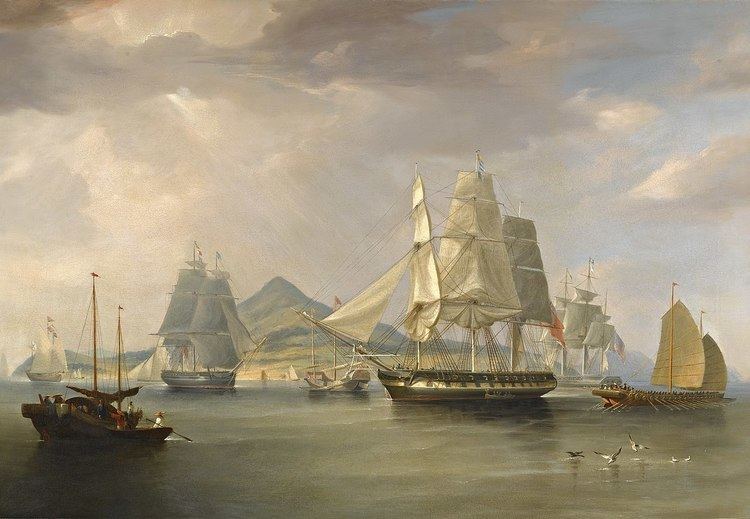Ethnicity Scottish Connected families Kerry family | Current region United States | |
 | ||
Estate Les Essarts,Naushon Island | ||
The Forbes family is a wealthy extended American family long prominent in Boston, Massachusetts. The family's fortune originates from trading between North America and China in the 19th century plus other investments in the same period. The name descends from Scottish immigrants, and can be traced back to Sir John de Forbes in Scotland in the 12th century. Notable family members are businessman John Murray Forbes (1813–1898), part of the first generation who accumulated wealth, and politician John Forbes Kerry (born 1943).
Contents
Family origins
The first member of the Forbes family to live in the United States, John Forbes (1740–1783), a clergyman, married Dorothy Murray on February 2, 1769 in Milton, Massachusetts, where one of his three sons was born. The family is considered{{by whom|date=January 2015}2} part of the Boston Brahmin ėlite, although the Reverend John Forbes' first post on the North American continent was in British East Florida, where he became the first Anglican clergyman licensed to officiate during the English period of 1763-1783. The Forbes family has a link to the Dudley-Winthrop family directly from Thomas Dudley (1576-1653), father of Anne Bradstreet (1612-1672), the first English-language female poet from America.
Trade with China
The Boston trading firm Perkins & Co. sent many young men of their extended family to participate in their business activities abroad. Ralph Forbes being married to Margaret Perkins, their children were encouraged in the business. Following the death overseas of his older brother, Thomas Tunno Forbes, the Perkinses encouraged John Murray Forbes to travel to China, too. There John was mentored by the Chinese merchant Houqua who treated him like a son.
Perkins & Co., like many other Boston trading firms in the early 19th century, sent ships to China to get tea for sale in America (although some was ultimately re-exported to Britain and Europe). To pay for the tea, they exported to China large quantities of silver and also furs, manufactured goods, cloth, wood, opium and any other items that they thought the Chinese market would absorb. Active trading houses, particularly those from Boston, usually kept representatives resident in Hong Kong whose main role was to look for and secure quality tea for export at good prices. This was John Murray Forbes' main job during the two years he spent in China (Gibson 2001; Malloy 1998). John Murray Forbes' brother, Robert Bennet Forbes, was more intimately involved in the importing side of the business and, at least by their own writings, had a more direct role than did John in the opium trade. (Kerr 1996; Hughes 1899).
Until recently, the Museum of the American China Trade in Milton, Mass., on Boston's South Shore, was curated by a Forbes great-grandson, Dr. H. A. Crosby Forbes, an expert on Chinese porcelain. The museum, which was housed in Robert Bennet Forbes' 1833 Greek Revival style house, was a monument to the China merchants and the great wealth in Boston that both drove and resulted from the China trade. The China trade museum was merged with the Peabody Essex Museum in 1984 leaving the house in the management of the Forbes House Charitable Trust which operates it now as the Captain Forbes House Museum.
Neither John or Robert spent more than a relatively short time in China—John was there for two years. Upon his return to Boston, John continued interest in the China trade for a few more years, serving as a business/investment manager for voyages undertaken by Robert and others. Fairly soon, however, he recognized that the China trade was becoming increasingly difficult to pursue profitably and that railroads offered a new and much more lucrative opportunity.
Railroad investment
John Murray Forbes made a considerable fortune from investments in railroads from the 1840s onwards. Some of the population growth of Chicago and Midwestern Plains states in the middle to late 19th century was due to John Murray Forbes' railroad projects in Michigan and Chicago. The Chicago, Burlington & Quincy Railroad, from Chicago west to the Mississippi, was built by John Murray Forbes who had a reputation for sound financial management amongst the railroad tycoons of the day (Larson 2001).
Other sources
John Murray Forbes and Ralph Waldo Emerson were friends. Forbes's son William Hathaway Forbes married Emerson's daughter Edith in 1865. William was an early investor in Alexander Graham Bell's telephone company, becoming company president.
Family assets
Some Forbes family members remain generally influential in local or national politics.
In the 1840s, John Murray Forbes bought Naushon Island, which is one of the Elizabeth Islands northwest of Martha's Vineyard and southwest of Cape Cod, and within the town of Gosnold, Massachusetts. Forbes and his descendants have used the property as a summer retreat since then. The property is presently owned by a Forbes family corporation, the Naushon Trust, Inc.
Noted as businessmen
Noted as politicians and activists
Many Forbes family members are influential in local or national politics in France, the US and the Philippines :
Ancestors in the United States
The first members of the family to live in the United States was John Forbes, clergyman, son of Archibald Forbes, although the family retained its connections with Europe and John Murray Forbes was born in France.
